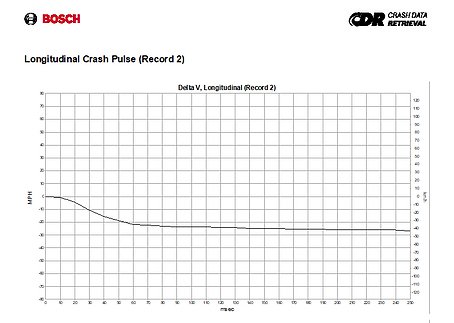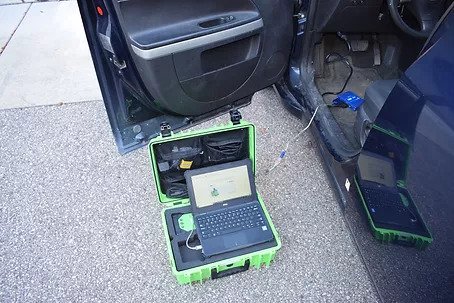What is an EDR?
EDR is an acronym for event data recorder, more commonly referred to as a “black box.” An event data recorder or “black box” is any electronic module within a vehicle which has the capability to record vehicle data during an event. In accident analysis and investigation, the event is a crash.
In passenger vehicles, the physical EDR is either the airbag control module (ACM), sensing and diagnostic module (SDM), restraint control module or less commonly the powertrain control module (PCM). With the exception of the PCM, these modules are the computers that control the vehicle’s safety systems like airbags, seatbelt pre-tensioners, etc. When the modules sense an acceleration indicative of an impact, they can store data.
History
Since the 1990’s certain passenger vehicles have had the capability to save vehicle data in the event of a crash. GM is generally regarded as the first to implement EDR technologies in their vehicles. With the Bosch Crash Data Retrieval (CDR) tool, event data could be downloaded by investigators to be analyzed following a crash.
Slowly, over the past 30 years, more automotive manufacturers began to implement EDR capabilities in their vehicles and until recently, the Bosch CDR tool was the only way to access and download the data. This is why at times the term CDR may be used interchangeably with EDR, when in reality EDR is the system and CDR is Bosch’s brand name.
Bosch CDR
Bosch’s tool for accessing and downloading crash data is called Crash Data Retrieval. The tool consists of a constantly updated software program and the hardware modules used to communicate with the vehicle’s airbag module. Assuming the electrical system is intact and the vehicle has electrical power, the data can be obtained by plugging the CDR tool into the OBDII, or diagnostic port. In the event that the damage sustained to the vehicle has restricted repowering the vehicle, the data can be accessed by accessing the module and plugging the CDR tool directly to the module. Direct-to-module downloads require specialized cables, specific to the make and model of the vehicle.
Krenz Engineering holds licenses to the Bosch CDR software and maintains an updated library of direct-to-module cables to image/download all CDR-compatible vehicles. A list of CDR-compatible manufacturers can be found above.
Hyundai / Kia EDR
Following the trend in the automotive industry, Hyundai and Kia began implementing EDRs in their vehicles starting late 2012. To access and download data from Hyundai or Kia vehicles, a manufacturer-specific hardware / software tool is required. Similar to Bosch CDR, the data can be extracted via the diagnostic port or direct to module with the appropriate cable.
Krenz Engineering holds a software license to both Kia and Hyundai EDR and maintains an updated library of direct-to-module cables to image/download all EDR-compatible Kia and Hyundai vehicles.
Tesla EDR
Similar to Kia and Hyundai, Tesla has developed their own EDR software for accessing and downloading event data recorded by their vehicles.
Krenz Engineering has all Tesla cables and the Tesla module required to access Tesla EDR.
Please contact us with any questions regarding compatibility. EDR data is extremely useful in accident reconstruction and downloading the data should be the highest priority following a serious crash.


